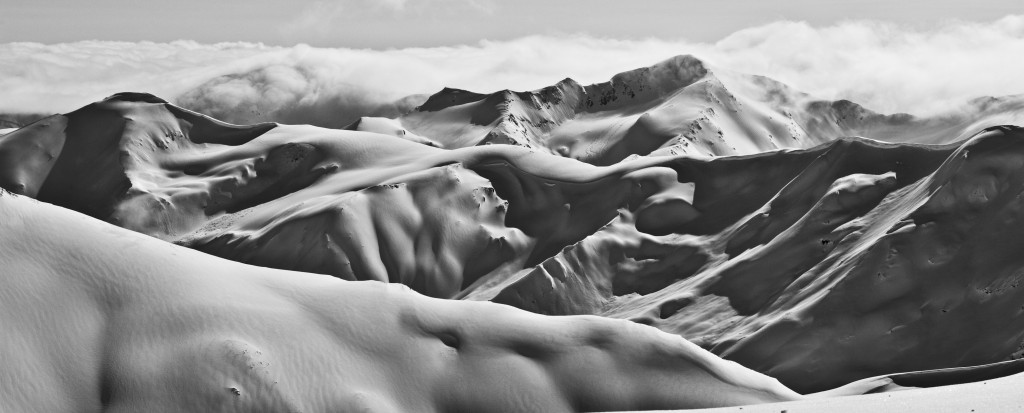Heli Skiing Powder in Canada: Snow classifications
The skiing and snowboarding communities have many words and ways of classifying snow. Snow ranges from deep powder heli skiing snow, that we’re consistently riding here in northern BC, to ‘packing snow’, that’s perfect for snowball fights due to its higher water content.
The classification often depends on the subject or people giving it a name. Anyone familiar with an avalanche assessment will know the term ‘depth hoar’ – the large course grains often found at the base of the snowpack, and know how this is formed. Similar less commonly used terms include those such as ‘firn spiegel’ – a description of the ice crust that forms on top of the snow.
While the general public may have their own adjectives, or names, for particular types of snow – ‘fluffy’, ‘wet’, ‘slushy’ etc, the scientific community and avid snow lovers have many more. Plates, graupel, needles and dendrites are such examples of classes of snow from this community’s terminology. The formation of each type is dependant on many variables, including the joining together of different crystals, temperature, and humidity.
Over the years many scientists have come up with complimenting and competing ways of classifying snow crystals. A popular book that describes them in more depth is Edward La Chapelle’s ‘Field Guide to Snow Crystals’. In it he traces the classifications from the leading authorities.

The one he states to be most widely used includes a system of 10 types of snow crystal, published in 1951 by the International Commission on Snow and Ice. He then shows how a researcher named Ukichiro Nakaya later expanded on this with a new system including four times the amount of snow types.
12 years after this in 1966, Choji Magano, professor of geophysics at Hokkaido University in Sapporo, Japan, and his student C W Lee, again, doubled the system. This is by far the most comprehensive system we now have for classifying snow crystals, with 80 variations.
Although 80 may sound like a large number, there are in fact well known types that have been omitted from this system. Graupel, for example, which are crystals that have formed with cooled droplets, have been included, but other crystal combinations – or ‘snowflakes’ – are not. Similarly, 12-branched crystals are included but the larger 18 and 24-branched examples are not found here. Other distinct forms notable for their omission include seagull and spearhead types, as well as many subdivisions of recognized crystals.
As if to make life even more complicated, especially for avalanche experts, snow is constantly changing once it has hit the ground. Throughout the winter it is being transformed by changing temperature gradients. For example, the snow nearest the bottom of the snowpack is often warmer than the snow at the top. Rapid temperature changes can lead to a large fluctuation in crystal types, and this is where we can see heightened avalanche warnings. The ‘International Classification for Seasonal Snow on the Ground’ is yet another classification device for these types of conditions. Common characteristics that it identifies within the snow include density, grain size, wetness and hardness.
Tags: Heli Skiing, Heliskiing, Heli Ski, Heliski, Heli Skiing Tour, Heli Skiing Holiday, Heli Skiing BC, Heli Skiing Resorts, Heli Skiing Lodges


